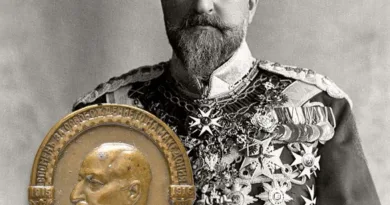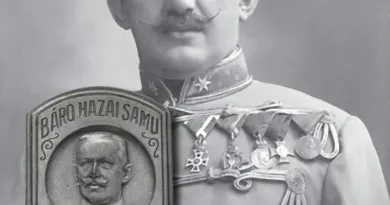Colonel General Arthur Arz von Straussenburg
Colonel-General Arthur Arz was born in Nagyszeben in 1857 to a Saxon family with a long history. After graduating, he first began his studies in law, but soon enrolled as a one-year volunteer and was assigned to the 23rd Jäger. At the end of his voluntary service, he entered active military duty. He graduated from the military school in Vienna. He then served with various troops and later with the General Staff. He was a colonel from 1902 and a general major from 1908. In 1912 he was promoted to lieutenant general and was assigned to the Department of War Mobilization at the Vienna Ministry of War as head of department. After the mobilization, in the first months of the Great War, he was sent to the front service at his request. First the 15th Division, then from September 7, 1914 he was the commander of the VI. corps. The corps played a crucial role in stopping the Russian attack at Limanova. It also played an important role in next year’s major offensive operation, the Gorlice breakthrough.
In August 1915 he was promoted to infantry general and entrusted with the command of the Austro-Hungarian 1st Army. The 1st Army successfully repulsed the attackers from Transylvania after the Romanian offensive. The 1st army later took part in the occupation of Romania. On March 1, 1917, King Charles appointed General Arz to replace Conrad as new Chief of Staff. The new commander-in-chief was pleased with Arz’s performance. Arz received the highest military honor of the Monarchy, the commander’s cross of the military Order of Mary Theresa. He remained in his post until the end of the war. More detailed information than described here can be found on this page.

Several cap badges can be attached to the person of General Colonel Arz. The Arkanzas badge in the opening image shows a portrait of the general in this company’s series of commander portraits. Arz had high reputation among his subordinates as well as the troops. Therefore, it is no coincidence that the soldiers of the 23rd Transylvanian Jäger Battalion, where he served at his early carrier as officer, informally called themselves Arz-Jäger. This is evidenced by the badge of the unit, decorated with the coat of arms of Transylvania.
In chronological order, the next higher unit under Arz’s command was the VI. corps. They also called themselves the Arz Corps.

With the end of the Great War, Arz’s military career also ended. He was retired on December 1, 1918. At that time he lived in modest conditions in Vienna. The Austrian successor state launched an investigation into his responsibility in the failed June 1918 offensive and then the autumn collapse. The investigations were unsuccessful. The reasons for the defeat were varied, no one could be found responsible. The general, who was left without income, was not supported by Romania the country which became competent according his place of birth after the war or Austria where he lived. The Hungarian government also rejected his request for an award. Finally, after a long reluctance, the Hungarian government paid him rent from 1926. In exchange for the favor, he was obliged to move to Hungary, which he formally did in 1932. In 1933 he applied for Hungarian citizenship. He died in Budapest in 1935. The present condition of his tomb unfortunately faithfully reflects the unworthy vomiting of the general after the war.





